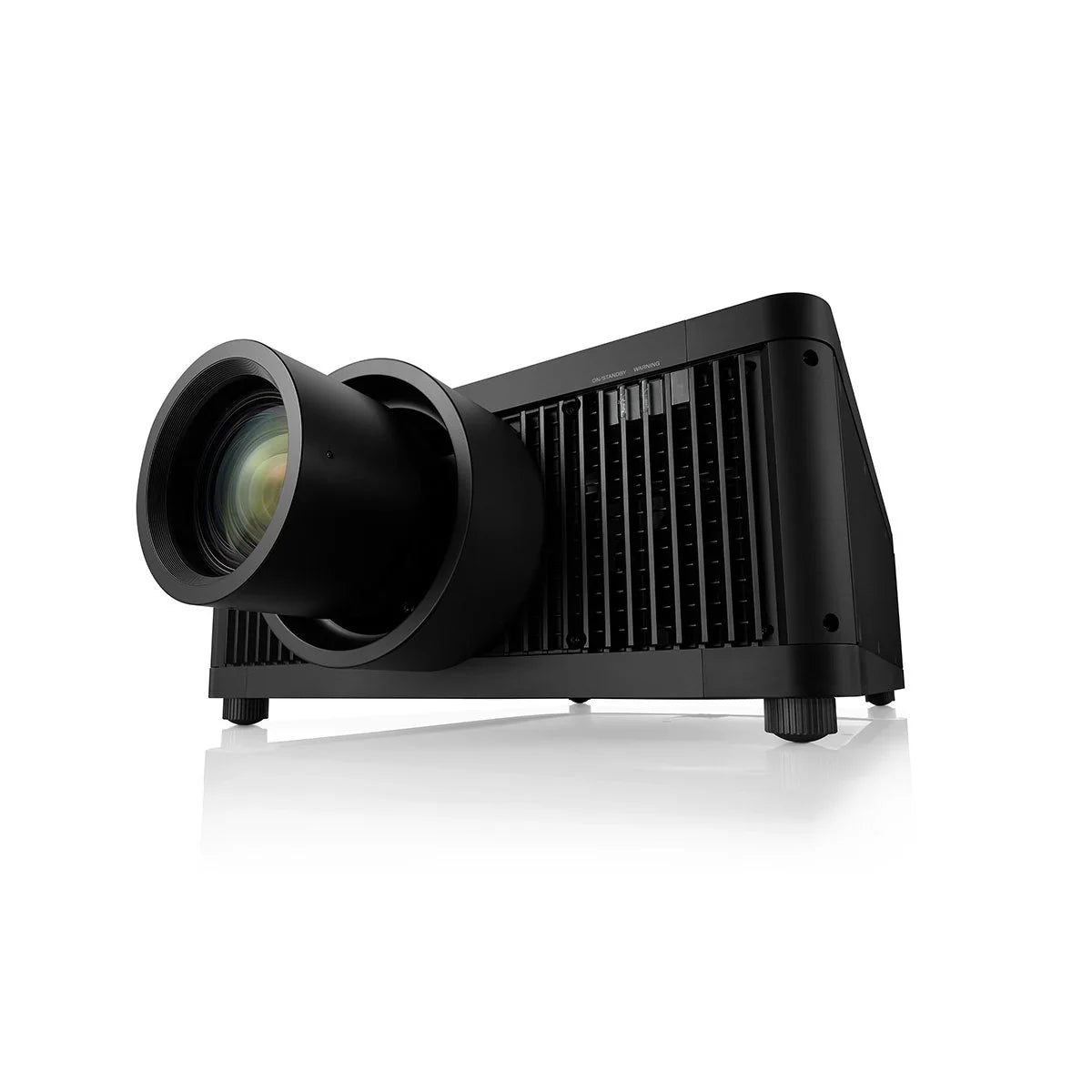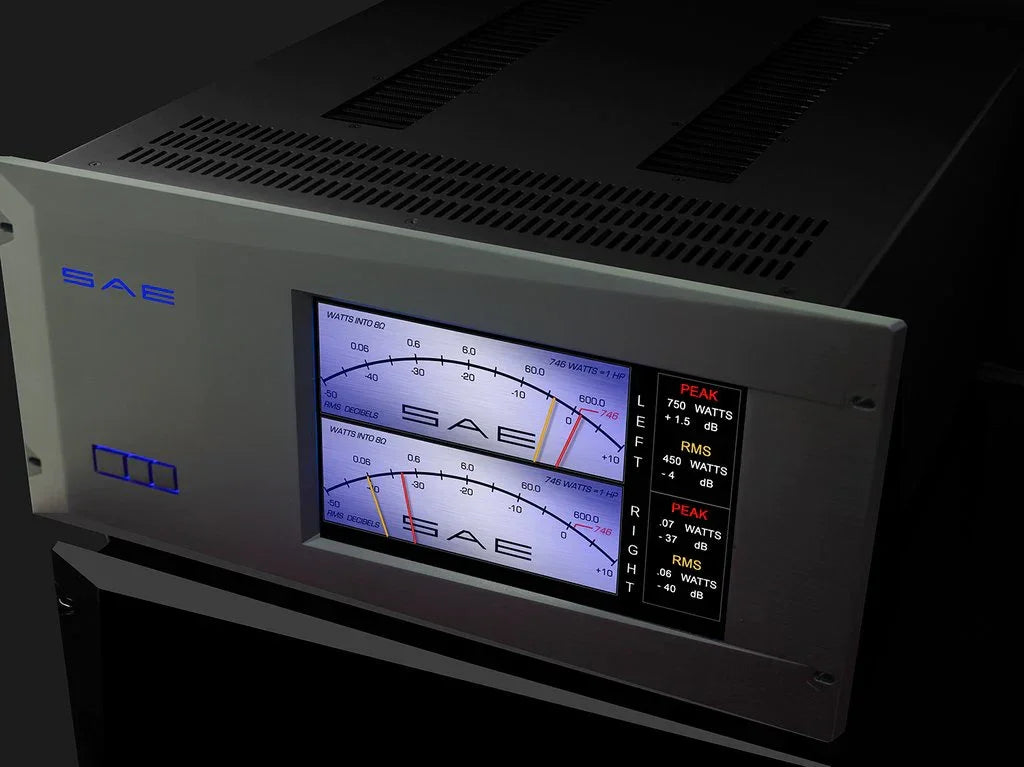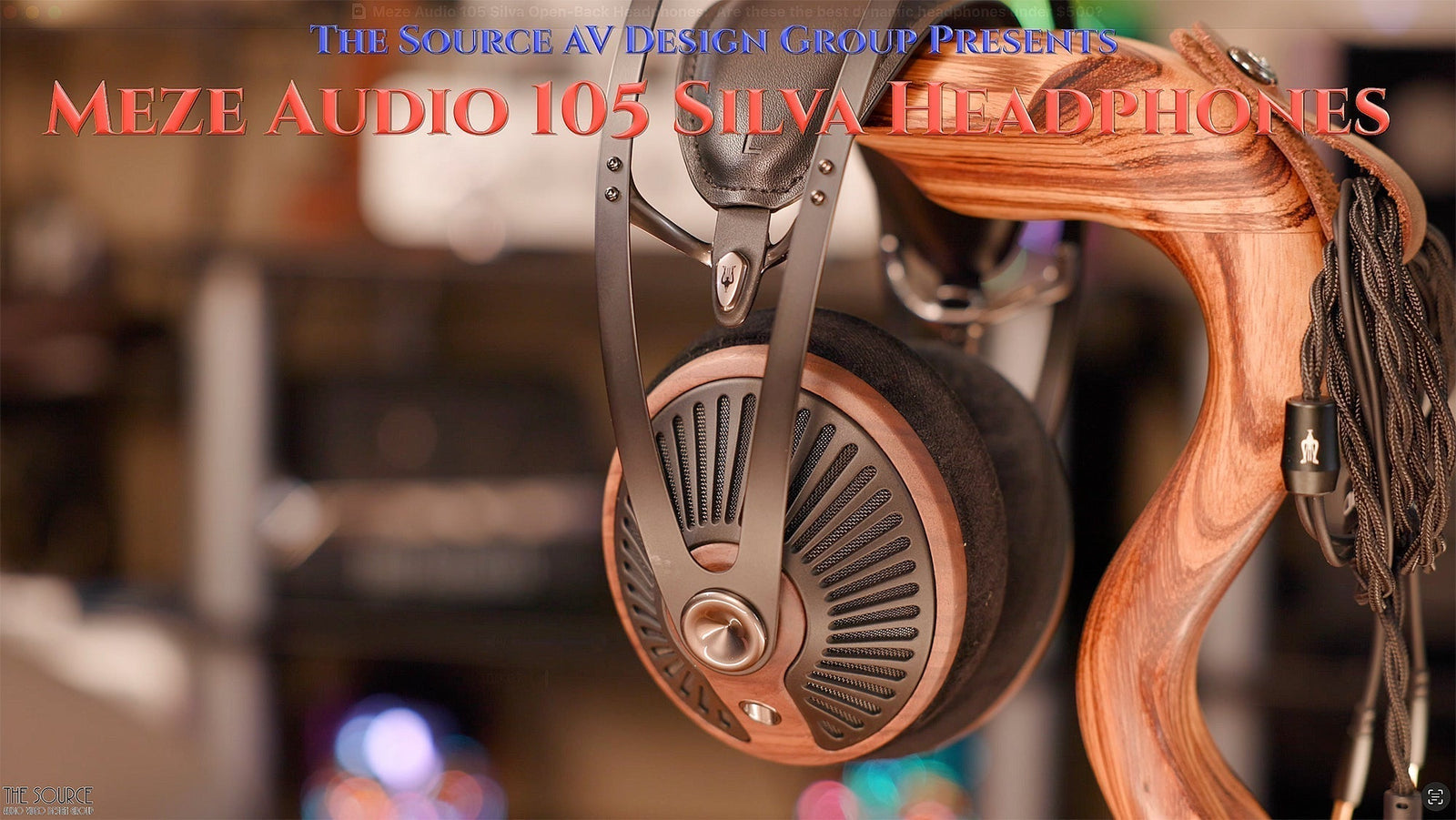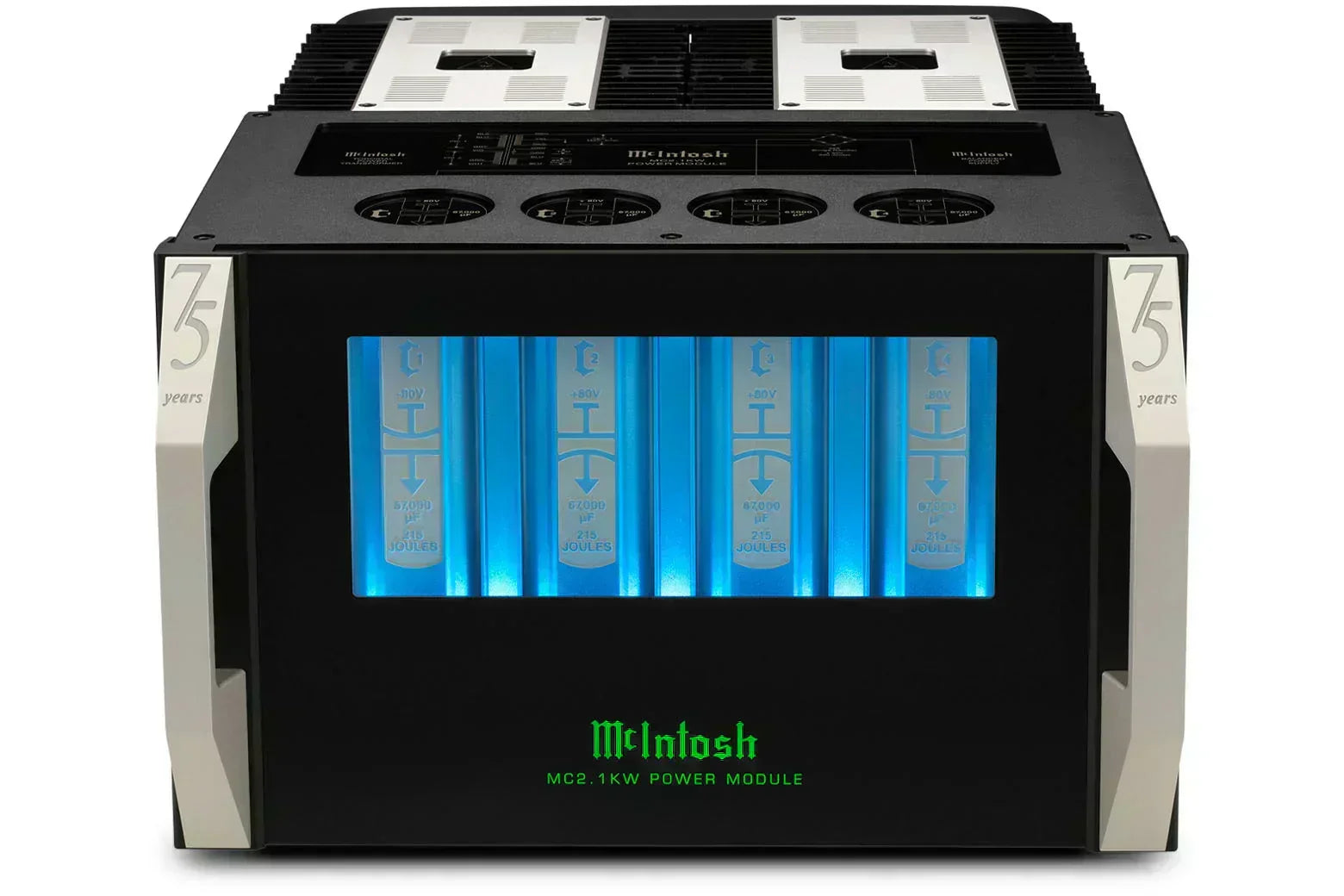Today I am excited to show you two flagship products today from Scientific Audio Electronics (SAE). The first is their flagship speaker amplifier, the 2HP-D, and the second is their flagship preamplifier, the Mark One.
In this article, I will share a bit about the design, technical specs, user experience, and of course, the sound of the two units together with my Sonus Faber Olympica Nova V floor-standing speakers and my Chord Hugo TT2 as the DAC. Most of my listening was done through streaming ROON, and I listened to some compact discs.
SAE Humble Origins

But before we get too far ahead, let me share a little about SAE if you are unfamiliar with them. Like many great companies’ origin stories, Scientific Audio Electronics was born in an apartment in 1967 in Los Angeles, California. This apartment was Morris Kessler’s.
The premium amplifier 2-Channel market was dominated by a few names you might be familiar with Marantz and McIntosh, both located on the east coast. However, Kessler’s west coast amplification swagger was about to be the talk of Stereophile. When the SAE Mark 2 solid-state amplifier received high praise from J. Gordon Holt in Stereophile, SAE became a real player.
SAE innovated by creating many of the world’s first such as the first graphic equalizer, the first digital read-out tuner, and the first phonograph pop-and-click filter. With the 2HP-D Amplifier and the Mark ONE Preamplifier, SAE continues to produce some of the most refined amplification in the world.
SAE 2HPD Amplifier Design and Build Qualities
The 2HP-D is incredibly powerful, delivering 600 watts into 8-ohm speakers, 1200 watts into 4-ohm speakers, and 1200 watts into 2-ohm speakers. It can do this from 20hz-20kHz with less than .01% THD!
The 2HP-D is a fully balanced Class A/B Dual Mono amplifier, with each channel consisting of a massive, custom-wound toroidal transformer, some of the biggest I have ever seen. The amplifier uses an advanced topology where each channel comprises two amplifiers driven in bridge mode. The 2HP-D has thunderous power and speed with no noise by properly executing this design.
A push-pull output stage run from only a single 4-quadrant input allows for even better performance. Using current feedback instead of more common voltage feedback, dual DC Servos to maintain low-frequency response, and impeccable board layout, each 2HP-D is electrically balanced and physically balanced around the fulcrum of the central ground point.
With over 50 years of solid-state amplifier design know-how, according to SAE, Kessler specified using innovative Thermal Trak output devices. With Thermal Trak, the temperature sensor required for the amps’ bias tracking is built into the same package as the output transistor allowing accurate real-time bias and performance optimization.
With so much power on tap, the 2HP-D requires two serious power supplies for its dual mono design, with each channel utterly independent of the other. On the back of the amplifier, you will notice two line cords and two power switches, and for the maximum amount of power, each cord can be connected to its own 20 amp AC circuit.
The 2HP-D uses 28 output transistors or 14 per channel, enabling the amplifier to deliver current into any load, including two ohms, and is designed with complete yet unobtrusive protection circuitry. The 2HP-D has no current limiting, never passing the audio signal through any protection circuit.
Instead, protection is optically coupled and outside of the signal path. If a problem does happen, the power supply immediately disconnects, and a timer starts reevaluating every 10 seconds when it is safe for the amplifier to operate again.
The 2HP-D uses convection cooling with air passing through the massive heat sinks to deal with heat. In rare situations when driving huge loads for extended periods, you can engage a cooling fan to help maintain proper operating temperature. I never once had to engage the fan as my Nova V’s were easily driven.
The 2HP-D was designed to be rack mounted, and as you can see, there was no way this beast would fit on one of my smaller consumer audio racks. Weighing just under 170lbs, the amp is both heavy and very large at approximately 19” wide, 8 ¾” Tall, and 20” Deep.
The chassis is solid metal, understated, industrial, yet sleek. One of my favorite amplifier features is the massive color LCD measuring nearly 9” wide and about 5.5” tall. The LCD lets you view the Virtual VU Meters where moving electrons display power output.
When switched, the meters display peak and average power simultaneously and can display a dual-channel frequency spectrum display. Listening in a dark room and watching the VU meters or the spectrum display is mesmerizing! Some other tasteful design choices are the backlit blue
The SAE logo and buttons on the front of the amplifier, complete the look.
On the big but beautiful backside of the 2HP-D, you will find a balanced XLR input for channel one, four-speaker binding posts, two positive and two negatives, for those who wish to Bi-Wire.
You also have a Speakon Loudspeaker Output for channel one for appropriate loudspeakers.
You have the two AC Power inlets, two power switches, the cooling fan I discussed earlier, and the switch to engage the fan; a Ground terminal for connecting components as needed; a remote input, when combined with the SAE Mark One, will power on both devices in sequence.
Lastly, you have the same input and outputs for Channel two.
Mark One Amplifier Design and Build Qualities
Since we got these sexy beasts turned around, let's take a gander at Mark One’s beautiful backside while we are at it. As you can see, the Mark One preamplifier has many inputs! With four Single Ended Inputs and four balanced Inputs. As for outputs, Mark One has Balanced Sub Outputs, Balanced Line Out, Single Ended Sub Out, and Single Ended Line Out.
On the front of the Mark One, you have the same back-lit SAE logo and buttons, an input selector control, a beautifully lit-up MK One Emblem, and motorized volume control.
One is much lighter in weight yet still possesses the rack-mountable design and width of the 2HP-D.
Many SAE customers requested an SAE preamplifier for the 2HP-D that compliments the superbly quiet design of the 2HP-D enabling the delivery of its tremendously quiet and powerful performance. To maintain the legacy sound from the late 60s and ’70s when Kessler was the pilot of SAE, the Mark One released in 2020 is made in the USA with the input and blessing of the original designer Morris Kessler.
SAE engineers developed the new Mark One to deliver a 12dB balanced output, a 6dB Single-ended output, and a separate gain-controlled subwoofer output. Boasting a signal-to-noise ratio of 130db, the Mark One presents a quiet and black background.
Sounds Impressions of the 2HP-D and Mark One
Now for the most fun part of every article for me, the quality of the sound! The SAE dynamic duo 2HP-D and Mark One create an exciting, detailed, fast, and vibrant quality of sound that I would characterize as a tonally accurate neutral presentation emphasizing speed, dynamics, and ultra-detail retrieval.
The pairing of the 2HP-D with my Sonus faber Olympica Nova V’s for the size of my room is a bit more than I technically would need. If SAE were to develop a smaller consumer rack-sized 1HP, that would likely be the perfect fit for my medium-sized room, listening position, and speakers.
However, I realized something interesting as I have been listening to the pair since bringing them home from our TSAV showroom was the level of control they have on the Nova V speaker drivers. Outputting 1200 watts into 4 ohms and a significant amount of current, the bass from the Nova V’s has never sounded so tight and dynamic, even at lower listening volumes.
So while the speakers on paper are rated up to 300 watts, and I don’t ever come close to taking advantage of the total power output of the 2HP-D at listening levels of 65db-85db sitting about 10 feet away from my speakers, the 2HP-D exhibits a level of control and dynamic punch I haven’t heard from other amplifiers in my listening room.
 More prominent harder-to-drive Sonus faber speakers from the Reference and Homage Tradition lines, such as the Aida’s, the Lilium, IL Cremonese, and Amati are rated significantly higher than the Nova series and will be great pairings with the SAE components.
More prominent harder-to-drive Sonus faber speakers from the Reference and Homage Tradition lines, such as the Aida’s, the Lilium, IL Cremonese, and Amati are rated significantly higher than the Nova series and will be great pairings with the SAE components. Or if you have a much larger room and listening position than I have and like to crank it up when listening, the 2HP-D and Mark One combo would be a terrific pairing with the Homage Tradition lineup as well as the Olympica Nova series as long as care is taken when listening to not damage the speakers as again the 2HP-D outputs a massive 1200 watts into 4 ohms!
Tougher-to-drive speakers will love the power and current the SAE amplifier can provide. In my room, the Nova V’s also loved the current delivery allowing me to get distortion-free sound, incredible speed, dynamics, and a smooth yet detailed top end that provides a fantastic listening experience when listening to well-recorded music.
The 2HP-D will not fix bad recordings or hide flaws in those bad recordings as it is one of the most transparent detail-rich amplifiers I have ever heard, so taking care with speaker and source component pairings to achieve the best system synergy is still something you will want to be mindful of when choosing separates and designing your perfect system.
Listening to Pink Floyd’s Dark Side of the Moon, the SAE system and Nova V’s throw a vast soundstage in my room with massive-sized images of the drums, cymbals, and guitar on “Breathe.” I hear detail on the electric guitar being played that I have never heard on my system before. The vocals sound smooth, with just enough energy to pull me into the song.
The soundstage depth in my room is excellent but not as holographic and deep as I have heard with some tube amplifiers in this room. The imaging is superb, allowing me to localize every sound on the next track, “On the Run,” as they travel left and right across the stage.
As “Time” starts to play, the clocks and the chiming sound brilliant and as if the clocks are in the room. When the drums pop and thud, they float in the air with ultimate blackness around them as the electric guitar presents with power and realism. The vocals sound huge on the song, imaging perfectly from the center of the stage. The sound of this song is just massive, as if I am at a concert but with a much better quality of sound.
Listening to the opening track “Enters” off “Tripping with Nils Frahm,” the Nova V’s and the SAE system present the live recording of Nils's performance in a way I have never heard before in my room. Again, the word that comes to mind to describe what I am hearing is enormous.
Massive lifelike images, neutral tone, and world-class black background.
As Sunson begins to play, Nils's fingers can be heard moving their way across the keys. Each finger hit presents powerfully. As the synthesizer starts to come in along with the bass line, I not only hear the music, but I feel the music. The synths sound so crystal clear, crisp, and electrified.
The bass line is so taught and dynamic with superb texture to it. If you haven’t listened to this entire album, do yourself a favor and give it a listen when you have the time, I think you will be very pleased. As the song speeds up, the amplifier and speakers never miss a beat matching the intensity and speed of the music and all of the synths and instruments being played.
Jumping to #2 later in the album, a soundstage favorite of mine, and a song that presents micro details, pace, and dynamics well. I am impressed with the width and imaging of the stage; the dynamics and speed are next level! The crowd can be heard flawlessly cheering as Nils steps up the pace, and the punch of the bass line feels like a kick to the chest as it hits in all the right ways. Around 6:35, Mark, things get friggin amazing, and the massive sound presents as if I am at the show live!
Switching gears and listening to Melody Gardot’s “Our love is easy” off her “Live in Europe album.” Melody’s vocals sound exceptional and tonally accurate without sounding overly rich or too forward. Her proximity to the microphone can be easily heard as she sings when she gets closer and farther away from the mic. Again, her image as she sings is massive in height.
Hearing her fingers slide across the guitar strings is presented with more detail than I have ever heard in my listening room. The cymbals have great tone and energy without sounding too forward, taking away from the rest of the song—a beautiful display of this song that I won’t soon forget.
I listened to many other genres of music, from Classical, Jazz, Hard Rock, Electronic, Pop, New Age, and Classic Rock, to name a few. The 2HP-D and Mark One can play and present them all with finesse, speed, dynamics, detail, and quality of sound that stays true to the recording, not changing the music tonally.
If the song presents deep bass, the 2HP-D will oblige; if the recording shows poorly, the 2HP-D will let you hear that; this amplifier and preamplifier are genuinely transparent, showing the signature of your speakers, DAC, CD Player, and of course, your room, allowing you to build a system around them easily and never having to worry about whether or not you will have enough power or current on hand to get the job done. They do all of this while maintaining a distortion-free quality of sound.
Suppose you are in the market for a flagship stereo amplifier and preamplifier. In that case, I highly recommend coming down to our showroom or visiting your local SAE dealer to give them a listen. All of us from TSAV hope you enjoyed this article of my detailed experiences with the SAE 2HP-D amplifier and MK One Preamplifier!
Check out theTSAV website for more info on the legendary line from SAE and all the products discussed in this article. Do you want to see more 2 Channel Stereo-focused articles? Let us know in the comments below.
Until next time friends, remember, let the music be your guide!









Leave a comment (all fields required)